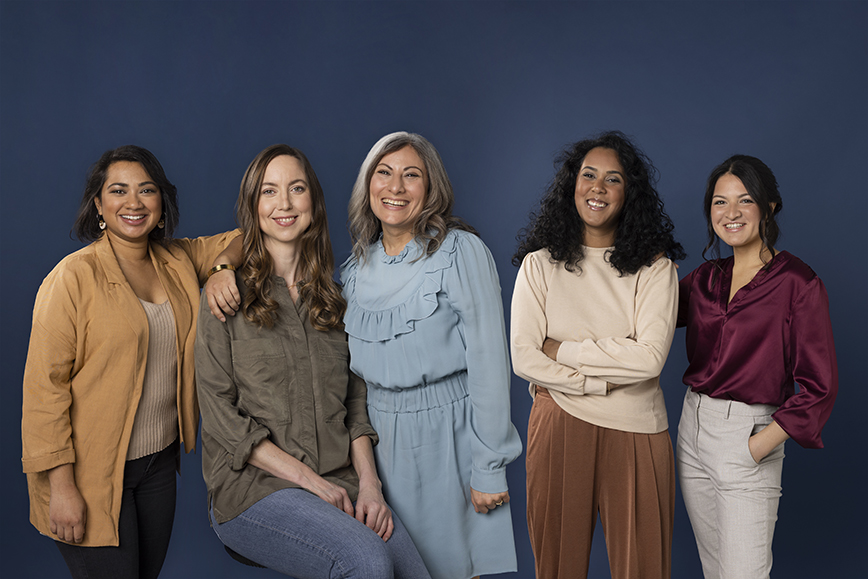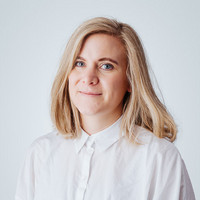Focus on more diversity in the technology sector
“The new Fill the Gap campaign replaces Giants”

What can you work with and how can you influence societal development as an engineer? Why is more diversity in the technology sector important? These are some of the questions raised in the new KTH campaign, Fill the Gap, that was launched on social media in December.
As with the previous campaign, Giants, Fill the Gap aims to increase the proportion of female and non-binary students on study programmes where they are underrepresented at KTH. What differentiates the new campaign from Giants is firstly that it is an online initiative on social media, and secondly because there is an even clearer focus on why more female and non-binary engineers are needed.
The campaign features five female alumni who each represent their particular “gap”. In other words, an important area where more diversity is needed to solve future societal challenges.

“It is about the fact that in the future, we should produce solutions that benefit everyone in society. There are also many studies that indicate that heterogeneous teams produce better results,” says Alina Lingnau, a Communications Officer at the Department of Communications and Business Liaisons (CBL) and project manager of Fill the Gap.
It is not simply about men and women, but rather about whether more perspectives are needed when new technological solutions are developed, she claims.
“If we only recruit from one part of the population, we lose the perspective from the other half. AI is one example. If a homogeneous group is developing solutions, it can easily be the case that only data from that group are included,” says Lingnau.
The campaign is launching this December on social media such as Instagram, Snapchat and TikTok, where the target audience (women in the 16 – 21 age group) is found. There, they get to meet the five female KTH alumni; Elina Kabir, Karin Ask, Sandra Thengius, Thani Kaldéus and Tonima Afroze.
“They all work in areas where they genuinely make a difference and contribute by bringing new perspectives to their respective areas,” says Lingnau.
Five "gaps" are highlighted in the campaign
The “gaps” that are highlighted during the campaign are:
- Travel and transport account for 1/3 of Sweden’s carbon dioxide emissions (Elina Kabir)
- Poor countries have 80% of cancer cases but only 1/3 of the available radiotherapy equipment (Karin Ask)
- 40% of the electricity we use comes from non-renewable resources (Sandra Thengius)
- Every year, 90 million tons of clothing are thrown out. Only 1% is recycled (Tahani Kaldéus)
- Face recognition works up to 34% less well for women of colour (Tonima Afroze).
As with the previous campaign, Giants, work with content for Fill the Gap is based on the forms of collaboration that have been developed between CBL and the EECS, ITM CBH and SCI schools.

Viktoria Fodor, Vice Director of First and Second Cycle Education at the School of Electrical Engineering, is a member of the reference group and has been involved since the start of Giants in 2014. She thinks it is a very important initiative for KTH and one that has broad support at School level.
“There is a big need for engineers, both bachelor and master degree graduates. And we need to encourage a broader group to apply to KTH so it is not only boys for the most part who become engineers,” she says.
“But the most important thing is that we admit students from groups that perhaps have less experience of what an engineer does. That perhaps, would not be their first choice.”
An event will be arranged in February
In addition to the online campaign, as with Giants, an event will be held on 19 February where members of the target group will have the opportunity to meet current students, attend lectures and take part in workshops. Whether it will be an in person or a digital event is yet to be decided.
Fodor thinks having event is a very good idea. She refers to surveys that have been done that show that many girls are worried whether they will enjoy or manage to complete a study programme.
“I think it is important that KTH students are given the opportunity to explain what it is like to study at KTH and show what students learn here,” Fodor says.
Håkan Soold

